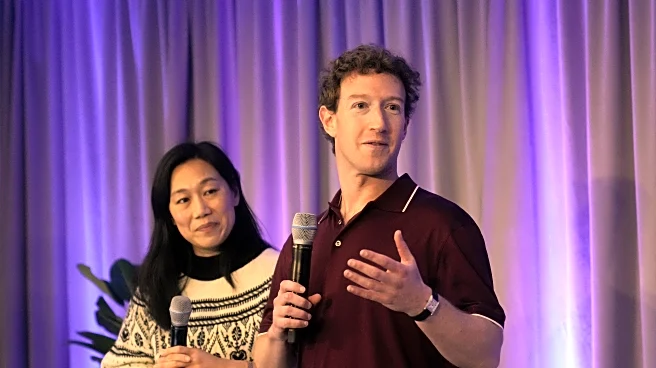What's Happening?
Mark Zuckerberg and Dr. Priscilla Chan are redirecting the Chan Zuckerberg Initiative's focus from education and community development to artificial intelligence-driven scientific research. The organization,
initially founded in 2015, supported various social causes, including school improvement and affordable housing. However, recent changes have seen a reduction in these programs, with a new emphasis on the Chan Zuckerberg Biohub network, which uses AI for biological research and disease detection. This shift aligns with Meta's broader strategy to integrate AI across its platforms.
Why It's Important?
The shift in focus from education to AI research by the Chan Zuckerberg Initiative highlights a strategic pivot towards long-term scientific advancement. This move could significantly impact the fields of biomedical research and AI development, potentially accelerating discoveries in disease detection and genetic analysis. While the initiative will continue to support some educational and community efforts, the reduced scope may affect local organizations previously reliant on its funding. The emphasis on AI reflects a broader trend in philanthropy towards technology-driven solutions with lasting impacts.
What's Next?
The Chan Zuckerberg Initiative plans to expand its computing infrastructure to support large-scale virtual experiments, enhancing research capabilities. The organization will continue to issue grants, albeit on a smaller scale, to educational and community groups. The shift may prompt other philanthropic entities to reevaluate their strategies, potentially leading to increased investment in AI and scientific research. Stakeholders in education and community development may need to seek alternative funding sources as the initiative refines its mission.
Beyond the Headlines
The decision to focus on AI research over social programs may raise ethical questions about the role of philanthropy in addressing immediate societal needs versus long-term scientific goals. The initiative's pivot could influence other philanthropic organizations to prioritize technology-driven solutions, potentially reshaping the landscape of charitable giving.













